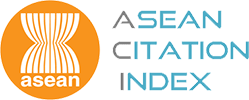The Causality Relationship between Exchange Rate Protected Deposits and Investment Instruments: Evidence from Türkiye
DOI:
https://doi.org/10.31436/ijema.v33i1.1478Keywords:
Exchange rate, Exchange Rate Protected Deposit, Investment instruments, Toda-Yamamoto, CausalityAbstract
This paper examines the causality relationship and the sign and magnitude of the relationship between the Exchange Rate Protected Deposit (ERPD) application, which was introduced to prevent the negative trend in exchange rates in Türkiye, and the stock market, exchange rate, and interest rate, which are considered as alternative investment instruments. ISE100 index closing prices, USD and EUR prices, weighted average deposit interest rate, and weekly data for the period 18.02.2022-17.11.2023 were used as the data set. Toda-Yamamoto causality, impulse-response, and variance decomposition analysis were applied. It is determined that the application of the ERPD affects alternative investment instruments and it is affected by them. In addition, it has been determined that the order of magnitude affecting the ERPD is as follows: euro prices, deposit interest rate, stock market index, money supply, and dollar prices. It was determined that the ERPD negatively affected the stock market and deposit interest rates. However, it was concluded that the ERPD application could not achieve the target of decreasing the euro and dollar prices. This paper will contribute to the literature, and it is thought that the results will be useful for policymakers, investors, and similar financial actors who wish to learn about ERPD.
References
Agustina, I.A.S., and I.K.O. Permadi. “The Impact of the Money Supply, Exchange Rate and Fuel Prices on the Inflation Rate.” Ekonomis: Journal of Economics and Business 7, no. 1 (2023). 32-6.
Akgül, I., and S. Özdemir. “Enflasyon-Faiz Orani ve Enflasyon-Döviz Kuru Ikilemi: GEG Programi Döneminde Türkiye Gerçegi.” Ege Academic Review 18, no. 1 (2018): 153-66.
Akkaya, M. “Türkiye Ekonomisinin Kronik Sorunu Dolarizasyon ve Dolarizasyon Sürecine Makroekonomik-Finansal Degiskenlerin Etkileri.” TESAM Akademi Dergisi 10, no. 2 (2023): 613-37.
Alici, A. “Döviz Kuru, Faiz Orani ile BIST100 ve BIST Ulastirma Endeksi Arasindaki Iliskinin Ampirik Analizi.” Isletme Arastirmalari Dergisi 12, no. 2 (2020): 1573-584.
Alimi, S.R., and C.C. Ofonyelu. “Toda-Yamamoto Causality Test Between Money Market Interest Rate and Expected Inflation: The Fisher Hypothesis Revisited.” European Scientific Journal 9, no. 7 (2013): 125-42.
Alpdogan, F.F. “Türkiye Cumhuriyeti’nin Ekonomi Politigi Bir Döngünün Içerisinde Mia Kirilgan Türk Ekonomisinin Son Otuz Yildaki Krizleri.” Sosyolojik Düsün 8, no. 1 (2023): 35-64.
Altinbas, H., N. Kutay, and C. Akkaya. “Makroekonomik Faktörlerin Hisse Senedi Piyasalari Üzerindeki Etkisi: Borsa Istanbul Üzerine Bir Uygulama.” Ekonomi ve Yönetim Arastirmalari Dergisi 4, no. 2 (2015): 30-49.
Arslan, M. “Exchange Rate-Protected Deposit Account Application in the Economic Crisis After the Coronavirus Disease 2019 Pandemic: The Case of Turkey COVID-19 Pandemisi Sonrasi Ekonomik Krizde Kur Korumali Mevduat Hesabi Uygulamasi: Türkiye Örnegi.” Journal of Business Administration Social Studies 7, no. 2 (2023): 139-46.
BRSA. Weekly Banking Sector Data, 2023. https://www.bddk.org.tr/BultenHaftalik/
Beer, F., and F. Hebein. “An Assessment of the Stock Market and Exchange Rate Dynamics in Industrialized and Emerging Markets.” International Business and Economics Research Journal (IBER) 71, no. 8 (2008): 59-70.
Bezgin, M.S., and E. Karaçayir. “Döviz Kuru ve Makroekonomik Degiskenler Arasindaki Iliskinin NARDL Model Yaklasimiyla Incelenmesi.” Ufuk Üniversitesi Sosyal Bilimler Enstitüsü Dergisi 10, no. 19 (2021): 107-23.
Bilgin, M.S. “Enerji (Petrol) Fiyatlari ve Döviz Kurunun Enflasyon Üzerindeki Etkisi, Türkiye Örnegi: Toda-Yamamoto Modeli ile Ampirik Bir Analiz (2014-2022).” Sakarya Iktisat Dergisi 12, no. 1 (2023): 1-14.
Budak, S., S.Ö. Cangi, and I. Tuna. “Temel Makroekonomik Degiskenlerin BIST Endeksleri Üzerindeki Etkisi.” Akademik Sosyal Arastirmalar Dergisi 5, no. 55 (2017): 34-42.
CBRT. Communiqué on Supporting the Conversion to Turkish Lira Deposit and Participation Accounts, 2021. https://www.resmigazete.gov.tr/eskiler/2021/12/20211221M1-1.htm
CBRT. Electronic Data Distribution System, 2023. https://evds2.tcmb.gov.tr/index.php?/evds/serieMarket
Ceylan, Ö. “Türkiye’de Yi-ÜFE, TÜFE ile Döviz Kuru Dengesi Ne Zaman Bozuldu? Esbütünlesme Iliskilerinde Kirilma Noktasi Tespiti.” Optimum Ekonomi ve Yönetim Bilimleri Dergisi 11, no. 1, (2024): 1-16.
Canöz, I., and F. Yigit. “Seçilmis Makroekonomik Degiskenlerin BIST 100 Endeksi Üzerindeki Asimetrik Etkileri.” Yasar Üniversitesi E-Dergisi 17, no. 65 (2022): 39-56.
Çabas, M. “Türkiye’de Döviz Kuru ile Enflasyon Iliskisine Fourier Kanitlar.” Erciyes Akademi 37, no. 4 (2023): 1898-912.
Çitçi, S.H., and H. Kaya. “Exchange Rate Uncertainty and the Connectedness of Inflation.” Borsa Istanbul Review 23, no. 3 (2023): 723-35.
Dotsey, M. “A Review of Inflation Targeting in Developed Countries.” Federal Reserve Bank of Philadelphia Business Review 3 (2006): 10-20.
Enders, Walter. Applied Econometric Time Series (2nd Edition). Alabama, USA: John Wiley and Sons. 2008.
Fattah, A., and T. Kocabiyik. “Makroekonomik Degiskenlerin Borsa Endeksleri Üzerine Etkisi: Türkiye ve ABD Karsilastirmasi.” Finansal Arastirmalar ve Çalismalar Dergisi 12, no. 22 (2020): 116-51.
Granger, C.W. “Investigating Causal Relations by Econometric Models and Cross-Spectral Methods.” Econometrica: Journal of the Econometric Society 37, no. 3 (1969): 424-38.
Güney, S., and K. Saka Ilgin, “Yatirim Araçlarinin BIST-100 Endeksi Üzerindeki Etkisinin Degerlendirilmesi.” Erciyes Üniversitesi Iktisadi ve Idari Bilimler Fakültesi Dergisi 53, no. 1 (2019): 226-45.
Gür, B. “Enflasyon ve Döviz Kuru Iliskisi: Türkiye Örnegi.” International Journal of Applied Economic and Finance Studies 7, no. 2 (2022): 153-63.
Saka Ilgin, K., and S.S. Sari, “Döviz Kuru, Faiz Orani ve Enflasyon Ile BIST Tüm ve BIST Sektörel Endeksler Arasindaki Iliskinin Ampirik Analizi.” Ekonomi Politika ve Finans Arastirmalari Dergisi 5, no. 3 (2020): 485-510.
Isik, H.B. “Enflasyon ve Döviz Kuru Iliskisi: Bir Esbütünlesme Analizi.” Süleyman Demirel Üniversitesi Iktisadi ve Idari Bilimler Fakültesi Dergisi 9, no. 2 (2004): 325-40.
Jonas, J., and F.S. Mishkin. “Inflation Targeting in Transition Countries: Experience and Prospects.” National Bureau of Economic Research no. 9667 (2003): 353-422.
Khalid, W. “Effects of Interest Rate and Exchange Rate on The Stock Market Performance of Pakistan: A Cointegration Approach.” Journal of Finance and Economics 5, no. 5 (2017): 219-32.
Khan, J., and I. Khan. “The Impact of Macroeconomic Variables on Stock Prices: A Case Study of Karachi Stock Exchange.” Journal of Economics and Sustainable Development 9, no. 13 (2018): 15-25.
Kholdy, S., and A. Sohrabian. “Exchange Rates and Prices: Evidence from Granger Causality Tests.” Journal of Post Keynesian Economics 13, no. 1 (1990): 71-8.
Kirchgässner, G., Jurgen Wolters, and Uwe Hassler. Introduction to Modern Time Series Analysis (2nd Edition). London, United Kigdom: Springer Science and Business Media, 2012.
Koyuncu, T. “BIST-100 Endeksinin Makroekonomik Degiskenler ile Iliskisi: Ampirik Bir Çalisma.” Finans Ekonomi ve Sosyal Arastirmalar Dergisi 3, no. 3 (2018): 615-24.
Leigh, D., and M. Rossi. “Exchange Rate Pass-Through in Turkey.” IMF Working Paper 2, no. 204 (2002): 1-19.
Makhdom, M.A. “Makroekonomik Göstergeler ile Döviz Kuru Arasindaki Iliskinin Analizi:(2005: 01-2019: 10) Türkiye Uygulamasi.” Isletme Arastirmalar? Dergisi 13, no. 1 (2021): 772-89.
McCarthy, J. “Pass-Through of Exchange Rates and Import Prices to Domestic Inflation in Some Industrialized Economies.” Eastern Economic Journal 33, no. 4 (2007): 511-37.
Peker, O., and S. Görmü?. “Türkiye’de Döviz Kurunun Enflasyonist Etkileri.” Süleyman Demirel Üniversitesi Iktisadi ve Idari Bilimler Fakültesi Dergisi 13, no. 2 (2008): 87-202.
Petek, A., M.B. Doganer, and C. Altun. “BIST-100’ü Etkileyen Reel Efektif Döviz Kuru, Cds, Politika Faizi Ve Reel Gsyih Iliskisinin Asimetrik Nedensellik Analizi.” Social Mentality and Researcher Thinkers Journal (SMART JOURNAL) 8, no. 63 (2022): 1585-597.
Sarigül, H. “Dolarizasyonun Türkiye’de Faaliyet Gösteren Kamusal Sermayeli Mevduat Bankalarinda Kârliliga Etkisi.” Sosyoekonomi 31, no. 57 (2023): 255-82.
Sanli, S., T. Konak, and M. Özmen. “Faiz, Döviz Kuru, Altin Fiyatlari ve BIST100 Endeksi Iliskisinin Ekonometrik Analizi: Türkiye üzerine bir uygulama.” Izmir Iktisat Dergisi 36, no. 4 (2021): 928-48.
Sentürk, M., and E. Dücan. “Türkiye'de Döviz Kuru-Faiz Orani ve Borsa Getirisi Iliskisi: Ampirik Bir Analiz/The Relationship between Exchange Rate-Interest Rate and Stock Return in Turkey: An Empirical Analysis.” Business and Economics Research Journal 5, no. 3 (2014): 67-80.
Sözen, Ç., O. Seyranlioglu, and F. Ispiroglu. “Causality Analysis between BIST-100, Investor Risk Appetite, Exchange Rate, Inflation and Interest Rate in Türkiye Economy.” Uluslararasi Ekonomi Isletme ve Politika Dergisi 8, no. 1 (2024): 24-37.
Tekin, N., and S. Görmüs. “Katilim 30 ve BIST100 Endekslerinin Banka Mevduat Faizleri ve Döviz Kuru ile Iliskisi: Kantil Regresyon Yöntemi.” Uluslararasi Ekonomik Arastirmalar Dergisi 8, no. 1 (2022): 15-24.
Toda, H.Y., and T. Yamamoto. “Statistical Inference in Vector Autoregressions with Possibly Integrated Processes.” Journal of Econometrics 66, no. 1-2 (1995): 225-50.
Tunali, H., and D. Kalkay. “Currency Protected Deposit Account Implement as a Macroprudential Monetary Policy Instrument.” Procedia (PAP) 18 (2023): 63-8.
Uzunel, E.C., and E.T. Güven. “B?ST-100 Endeksi ile Çesitli Makroekonomik Degiskenler Arasindaki Uzun Dönemli Iliskinin ARDL Yaklasimi ile Analizi.” Pamukkale Journal of Eurasian Socioeconomic Studies, 6 no. 1 (2019): 19-36.
Vejzagic, M., and H. Zarafat. “Relationship Between Macroeconomic Variables and Stock Market Index: Cointegration Evidence from FTSE Bursa Malaysia Hijrah Shariah Index.” Asian Journal of Management Sciences and Education 2, no. 4 (2013): 94-108.
Yildirim, K., E. Erdogan, N. Algan, and H. Bal. “Finansal Piyasalardaki Gelismelerin ve Kur Korumali Mevduat Sisteminin Finansal Derinlesmeye Etkisi: Türkiye Örnesi.” In International Congress on Eurasian Economies 1 (2023): 26-8.
Yurttadur, M., and M.Z. Tasci. “Kur Korumali Mevduat Uygulamasinin Katilim Bankalarinin Finansal Performansina Etkisi.” PressAcademia Procedia 16, no. 1 (2023): 205-06.
Zarei, A., M. Ariff, and M.I. Bhatti. “The Impact of Exchange Rates on Stock Market Returns: New Evidence from Seven Free-Floating Currencies.” The European Journal of Finance 25, no. 14 (2019): 1277-288.
Zuhal, M., and S. Göcen. “Kur Korumali Mevduat Hesabi Uygulamasinin Döviz Kurlari Üzerindeki Etkisi: Birim Kök Testleriyle Bir Inceleme.” Karadeniz Sosyal Bilimler Dergisi 15, no. 28 (2023): 298-317.








